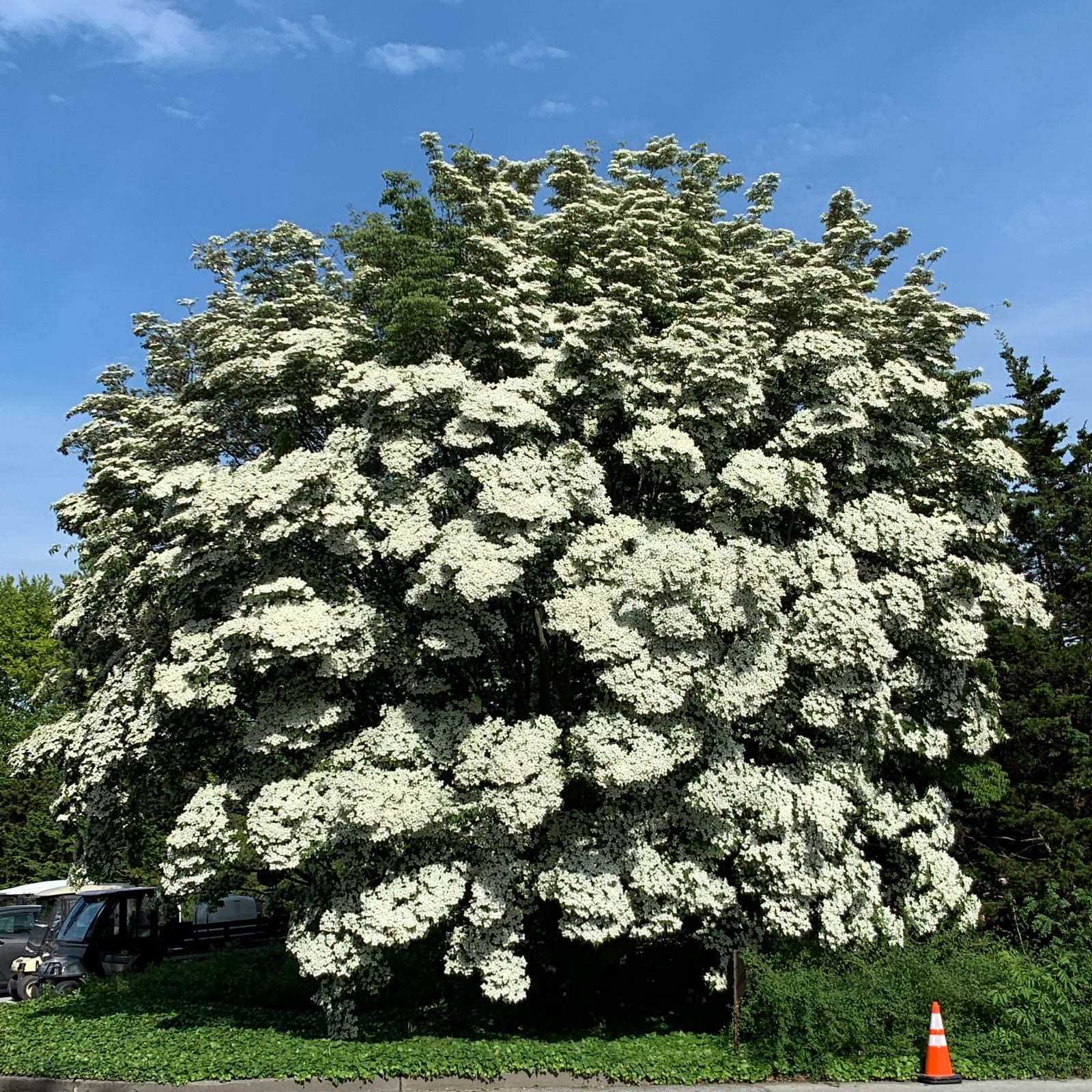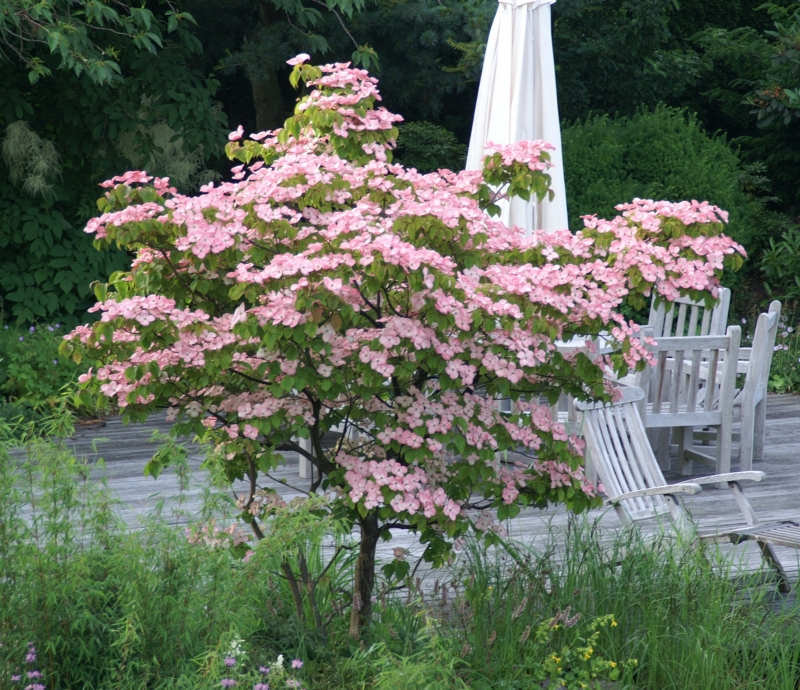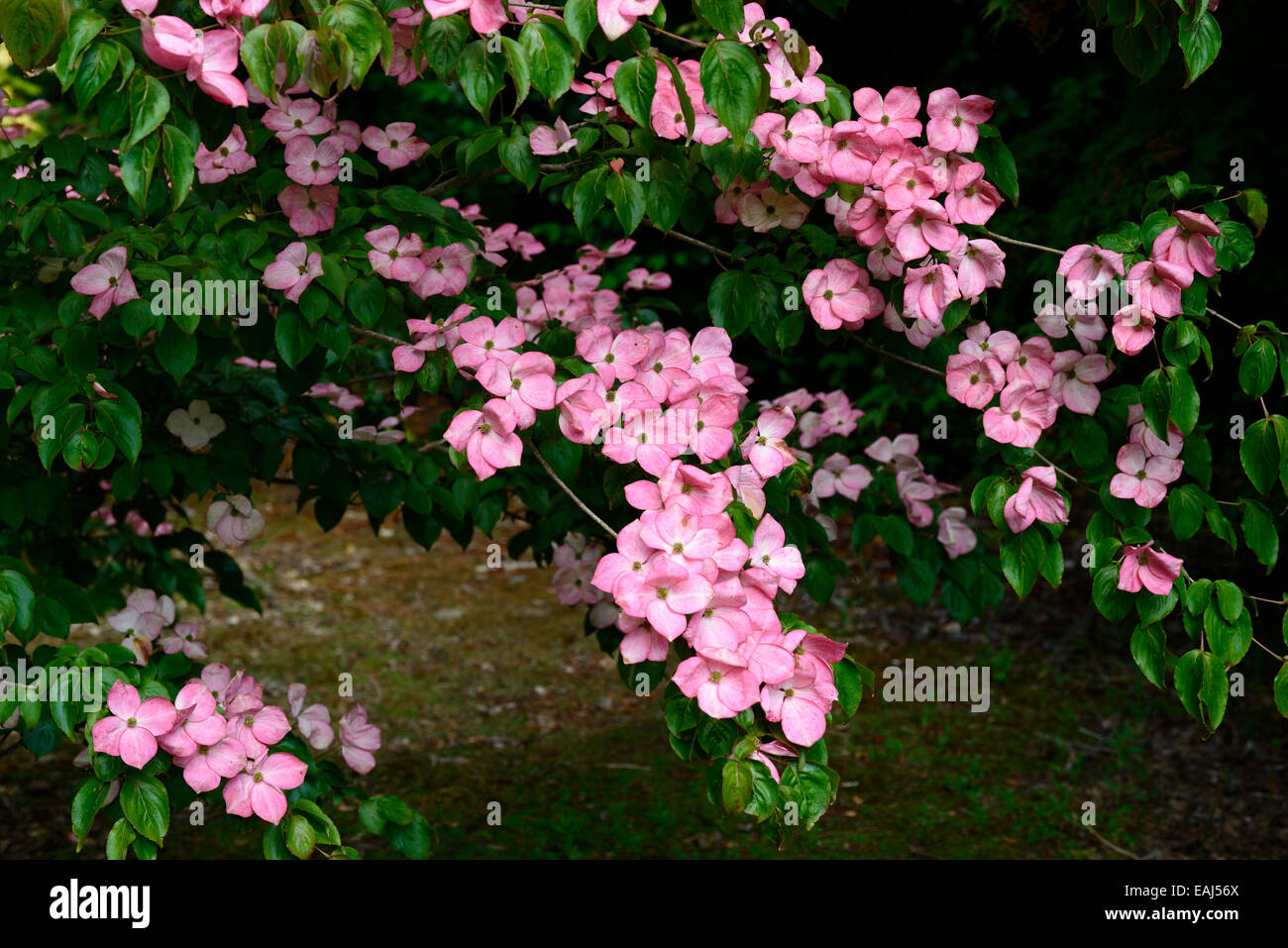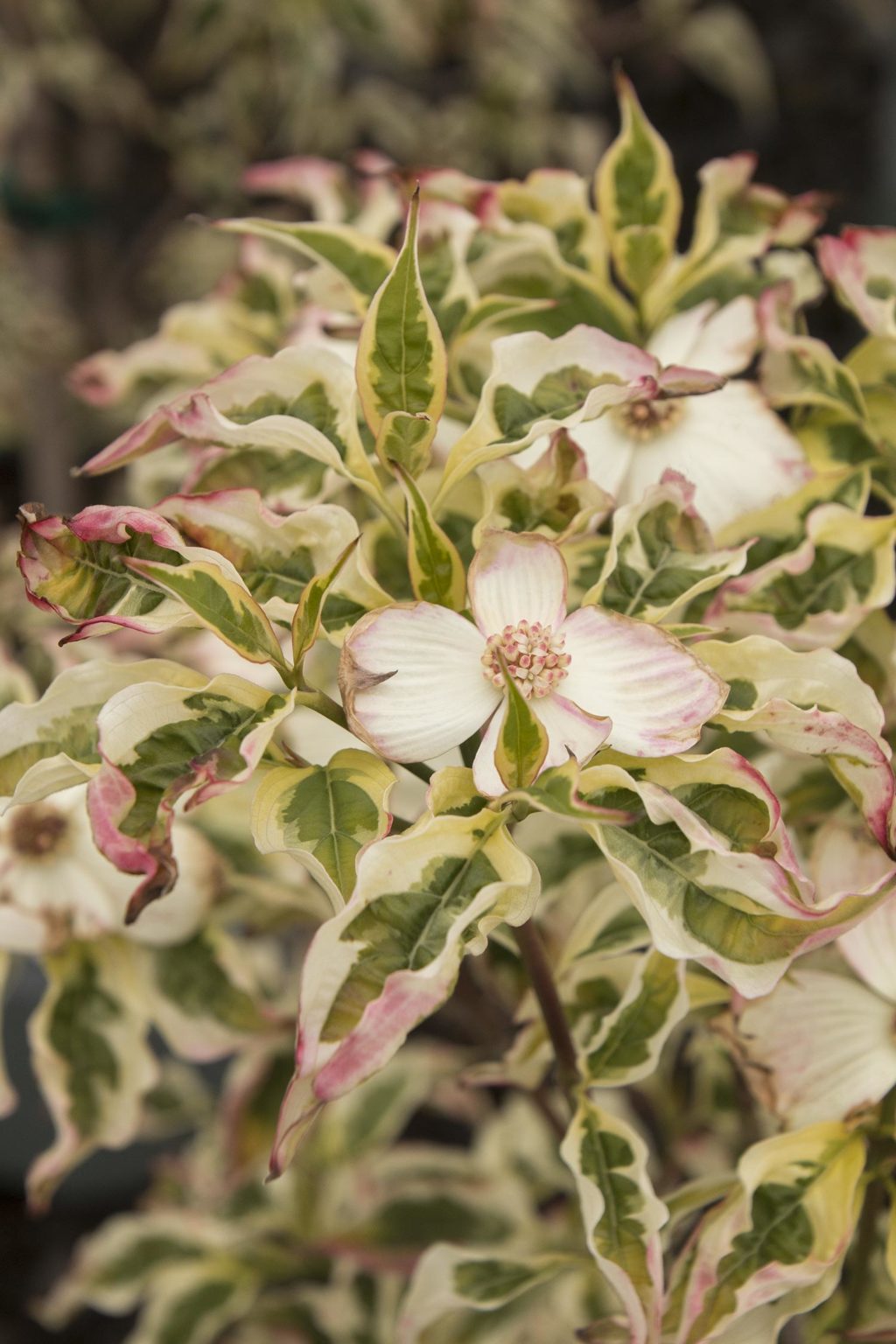
Cornus Kousa Rosabella Rosa Blumenhartriegel
Cornus kousa Radiant Rose™ : A broadleaf deciduous tree with green foliage and white and pink flowers in spring and summer followed by red and pink fruit. Attractive to birds and bees. To grow well, it prefers sun - mostly shade and regular water. Grows best in well-drained, rich, acidic and average soil. In need of something verticillium wilt resistant? This may be a good option. Plant type.

Cornus kousa Copacabana Rosa, Blumenhartriegel, rosa Blüte Garten Sauer
Plant Profile Contents Family: Dogwoods (Cornaceae) Genus: Cornus Trivial names: Red dogwood, flowering dogwood Origin: Asia, America and subtropical areas. However, it is predominantly native to the northern hemisphere Dogwoods are shrubs and small trees Plant height: Only after many years they reach their full height of up to 5 - 7 meters

Rotrosa Blüten von Juni blühende Hartriegel, Cornus Kousa 'Rosea
Cornus kousa 'Miss Satomi' is a pink flowering Japanese Dogwood tree/shrub. Buy from specialist nursery with 97% review score & nationwide delivery.

Cornus Kousa Rosabella Rosa Blumenhartriegel
Cornus kousa kousa A small bushy tree to 7m tall, with oval leaves turning reddish-purple in autumn, and tight clusters of small white flowers surrounded by four large oval cream bracts and followed by strawberry-like deep pink fruit clusters Other common names Szechuan strawberry Synonyms Cornus japonica Dendrobenthamia japonica

Kousa Dogwood blooms pink. Front circle. Dogwood blooms, Potted
Cornus kousa Growing and Care Guide. Scientific Name: Cornus kousa Common Name(s): Kousa Dogwood, Japanese Kousa, Chinese Kousa, Korean Kousa, Kousa Growing Zone (USA / UK Hardiness): 5 to 8 / H6 Plant Details. Life Cycle / Plant Type: Deciduous, bushy tree. Plant Height: 15 to 40 feet (4.5 to 12 m). Plant Spread: 15 to 32 inches (4.5 to 10 m). Blooms: Late spring and early summer.

Cornus kousa
It's not a huge tree -- growing to a maximum height and spread of 15 to 30 feet, depending on which cultivar you plant. Younger Japanese flowering dogwoods have a vase-shaped growth pattern, but as the plants mature, the branches take on a more horizontal growth pattern, so it has a graceful, spreading canopy. Image Credit

Cornus kousa Trees and Shrubs Online
Species Links Cornus kousa. A deciduous shrub or small tree up to 20 ft in height, of bushy habit; young shoots glabrous.
 1.jpg)
Cornus Rosy Teacups (Cornus x elwinortonii 'KN1442’)
Pronunciation: KOR-nus KOO-sa Family: Cornaceae Genus: Cornus Synonyms: 'Satomi'? Type: Broadleaf Native to (or naturalized in) Oregon: No Spreading and arching habit, to 25 ft (7.6 m) tall, large pink floral bracts, some red color in leaves and branches; foliage in fall is bright red.

Cornus kousa Rosabella der rosa Blumenhartriegel Helmers Baumschulen
Dogwood trees and shrubs (Cornus spp.) include a large group of flowering plants within the genus Cornus.The 17 types of dogwood trees in this genus that are native to the United States also include some species that are best described as subshrubs—fast-growing woody plants that tend to die back in the winter to ground level and grow back from buds near the base of the plant.

Flowering dogwood (Cornus florida f. rubra) Pink Dogwood, Flowering
The fruit is sometimes used for making wine. [10] It is resistant to the dogwood anthracnose disease, caused by the fungus Discula destructiva, unlike C. florida, which is very susceptible and commonly killed by it; for this reason, C. kousa is being widely planted as an ornamental tree in areas affected by the disease. [8]

Cornus Kousa Satomi rosa Blumen Blume Blüte Hartriegel japanischer
Soil. The kousa will thrive in rich soils with plenty of organic materials that are consistently moist but not wet. If placed in soils with a high pH, the kousa may develop light foliage, a sure sign that the tree lacks soil acidity, which it prefers . Water. Maintaining moisture around the tree is good practice.

Mar 31 Written By Vic MacBournie Consider starting with the native Cornus Florida Without a doubt the most impressive understory tree in our woodland garden is the Cornus Kousa, but I urge gardeners thinking about planting one to reconsider. It's not that the Cornus Kousa isn't spectacular in flower - it is.

Variegated Stellar Pink ' Dogwood Cornus kousa x florida ' Stellar
'Miss Satomi' is a spreading medium-sized deciduous shrub with ovate leaves turning purple and deep red in autumn. Flower-heads with four ovate, deep pink bracts. Fruits strawberry-like, rosy-pink Synonyms Cornus kousa 'Satomi' Cornus kousa var. chinensis 'Satomi' see more Cornus kousa 'Satsumii' Join the RHS today and save 25% < > © RHS 2002

Cornus Kousa Rosabella Rosa Blumenhartriegel
YES Names Latin (scientific) name: Cornus kousa Common English name: Kousa dogwood Other names: French name: Cornouiller de kousa Habitat No information available Other notes No information available Hardiness zone (s) 4a, 4b, 5a, 5b, 6a, 6b, 7a, 7b A hardiness zone is a geographically defined area where a given plant is capable of growing.

I love Cornus kousa 'Satomi' the pink kousa dogwood. greatplants
The Kousa dogwood is a handsome, small- to medium-sized tree reaching a mature height of 30 feet. Sometimes referred to as the Chinese dogwood, this Asian is a cousin to our native flowering dogwood. It can be used as a specimen plant or in shrub borders. The genus name, Cornus, is Latin, from the word, cornu, which means "horn." This.

Cornus kousa 'Satomi' Dogwood trees, Dogwood, Pink dogwood
Height: 6m Spread: 4m Hardy Autumn colour Position Soil Native to Japan and Korea, Cornus kousa is a large shrub or tree with two good seasons of interest. In early summer it bears white bracts with tiny flowers in the centre, set against the green leaves, and in autumn the leaves flare bronze and crimson.